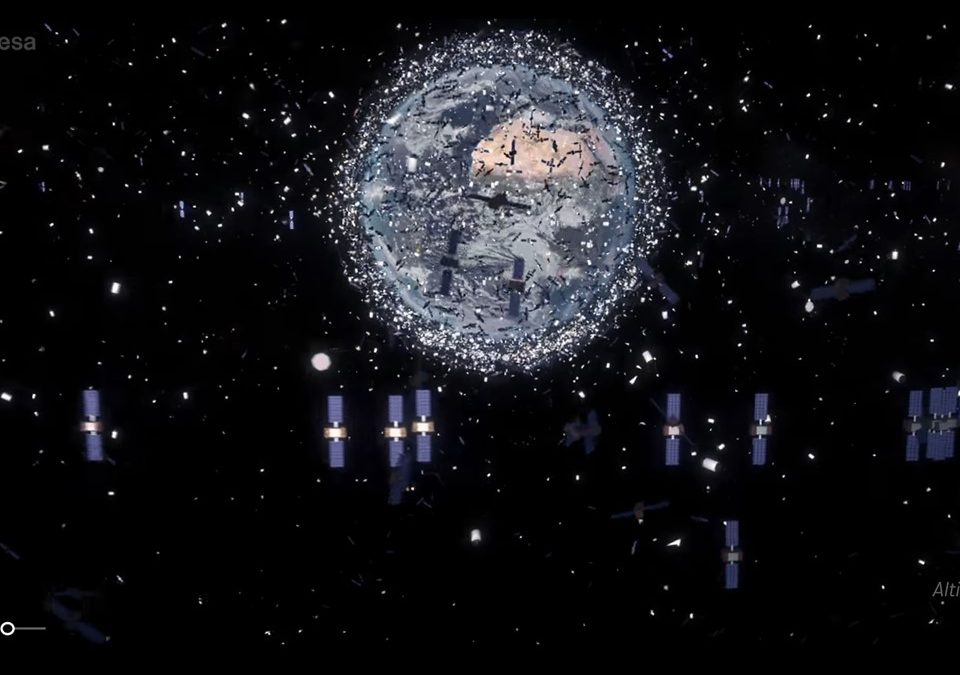Blog Editor’s Note: NASA is rightly concerned about the future of space and keeping it usable. The immediate problem and the focus of much recent attention has been Low Earth Orbit (LEO). GNSS fly about ten thousand miles above LEO in Medium Earth Orbit (MEO), so it is natural to regard the danger of collision with debris as unlikely. Yet pollution has a way of not staying where you put it. While unlikely, a Kessler event in LEO could migrate upward. And, despite the relatively untainted environment at GNSS MEO altitudes, a Kessler event is possible. Perhaps as the result of a meteorite impact. Also, the congested LEO environment is causing a number of companies to start planning to use more and more MEO space for future satellites. This will increase the chance for debris and collisions in what is now a comparatively pristine environment.
So while it’s not as big a problem as it is for others, at the moment, debris is a threat to GNSS. One of many threats which the world needs to seriously consider and plan against.
Thanks to members Jens Hoxmark and Ryan Terp for highlighting this article.
The Verge
As satellite constellations grow larger, NASA is worried about orbital debris
The space agency argues that these probes need to be de-orbited — reliably
Multiple aerospace companies, including SpaceX and OneWeb, have vowed to someday launch thousands of satellites into low Earth orbit, but these mega-constellations could make space a more congested and dangerous place. That’s why NASA is recommending in a new report that these companies make sure their future satellites are taken out of orbit as soon as they complete their missions.
Currently, there are about 4,000 intact spacecraft living in orbit around Earth, only 1,800 of which are operational. Yet, many companies want to dramatically increase that number. Satellite operators are eager to launch thousands of probes that can beam internet connectivity down to Earth, providing global coverage. SpaceX has filed applications with the FCC to launch nearly 12,000 internet-beaming satellites — first, an initial constellation of 4,425 probes, followed by a constellation of 7,518. Meanwhile, the European company OneWeb received approval to launch up to 720 satellites from the FCC, and it recently requested permission to launch an additional 1,260.
[THESE COMPANIES] NEED TO PAY ATTENTION TO CERTAIN AREAS TO MAKE SURE THEY DO NOT POLLUTE THE NEAR EARTH SPACE ENVIRONMENT.
If all these constellations are successfully launched around the same time, the number of operational satellites in orbit would quadruple, raising the risk of catastrophic and cascading satellite collisions. NASA wanted to know the potential impact of such a crowded space environment. So in a new study, the space agency envisioned future scenarios in which huge constellations of thousands of satellites dominate low Earth orbit to determine what kind of effect that would have. Based on their research, NASA scientists argue that nearly all of these satellites — 99 percent — will need to be taken out of orbit as soon as they have completed their time in space. This should prevent the number of collisions between satellites from increasing over the next few centuries.
“Because of the number of spacecraft involved in large constellations, [these companies] need to pay attention to certain areas to make sure they do not pollute the near Earth space environment with significant orbital debris,” Jer-Chyi Liou, the chief scientist of orbital debris at NASA who helmed the new study, tells The Verge.


